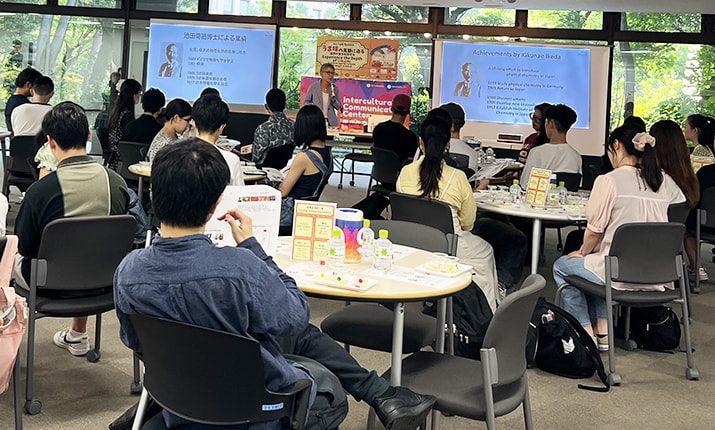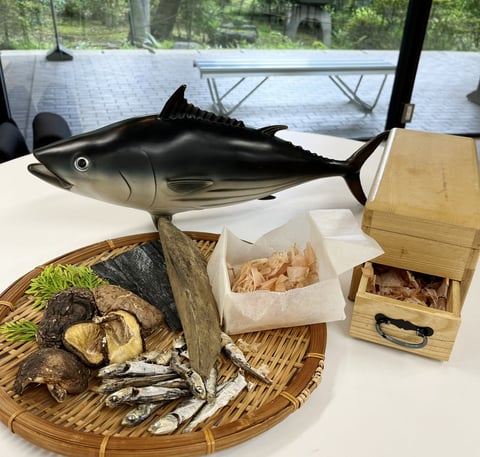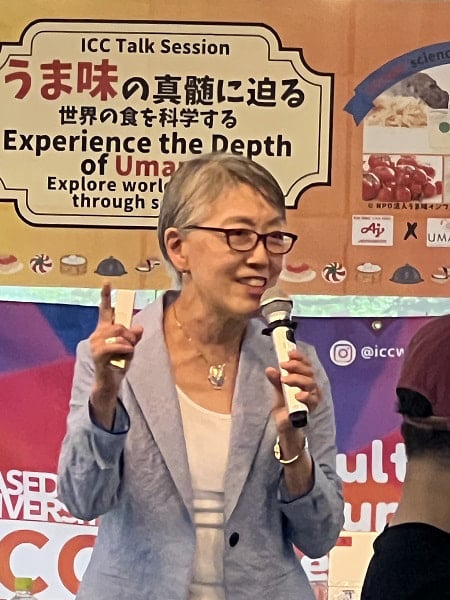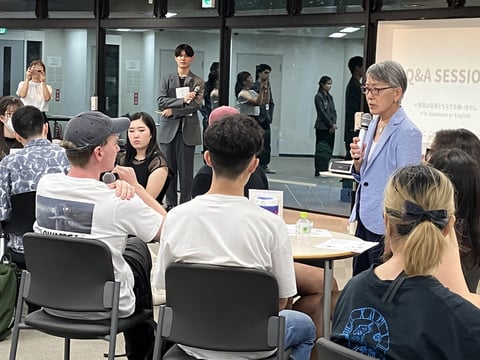Umami lecture at Waseda University “Experience the depth of umami - Explore world cuisine through science”
July 2024

The world is made up of many different food cultures. Food Ingredients, seasonings, and other factors that determine “deliciousness” vary from culture to culture and from individual to individual.
However, the five basic tastes are the same throughout the world. Although food cultures differ, scientifically speaking, the response of our bodies to the stimuli of the five basic tastes is basically the same.
On July 3, 2024, the Umami Information Center held a lecture titled“Experience the depth of umami - Explore world cuisine through science” at Waseda University, which focuses on world food culture from a scientific point of view. This event was organized by Waseda University ICC Intercultural Center)*, co-sponsored by Ajinomoto Co. Inc.
* ICC: An on-campus community for student of Waseda Univ. Taking advantage of the university's environment where international students from all over the world gather, ICC provides the opportunities that students could develop a new understanding of the world around them, while creating new values and interests.
The event was first organized by an ICC student member who was surprised by the difference in flavors of the dishes he tasted when he studied in Europe. Interested in the food culture of the country he was staying, he researched and found that, although there are differences in seasoning, the local cuisine is also rich in umami substances such as glutamate, just like washoku is.
Through his overseas experience he has come to believe that to understand different food cultures, it is also important to have a scientific viewpoint in addition to paying attention to historical and geographical backgrounds. He said, “Although we hear that umami is a common element in various food cultures around the world, not many people understand the true essence of umami.”
This is how the Umami Information Center received a request from ICC to give a lecture based on his proposal, “ We would like to learn about umami, one of the elements of food culture, from a scientific perspective through lectures by experts.”


The event was so popular that participation was determined by lottery.
On the day of the lecture, about 40 Japanese and international students who won the lottery gathered at the Waseda Univ. Garden Hall, the venue of the event.
The lecturer was Dr. Kumiko Ninomiya, the consultant of Umami Information Center. She gave her lecture in Japanese, while she projected her PowerPoint presentation in Japanese and English on both sides of the stage so that the international students could understand her talk. In her lecture Dr. Ninomiya showed two simple models of amino acids in western chicken stock and Japanese dashi to explain what the differences are between them. And she explained that although umami is a taste discovered in Japan, it is a taste that can be sensed by everyone around the world and is utilized in food cultures all over the world.
She showed the images of the babies' facial expressions when they tasted “sweet, sour, bitter, and umami”* and said that the babies’ reactions to the basic tastes were the same in all countries.
*Because infants are less sensitive to saltiness than adults, no experiments were undertaken with salty tastes.
Following Dr. Ninomiya's guidance, participants tasted dried tomatoes to capture and recognize umami taste on their tongues. They also experienced the synergistic effect of umami substances with kombu dashi and katsuo dashi, and the effect of salt reduction with vegetable bouillon. Through these tasting experiences, the students realized that umami substances greatly affect the tastiness of dishes.
In the second half of the event, students engaged in discussions at their tables. Students from various food cultures actively discussed umami and the five basic tastes in each country's cuisine. The event concluded with a Q&A session with Dr. Ninomiya.
Various comments were given on the feedback sheet after the lecture, such as “I was impressed by the fact that umami rich ingredients are found all over the world,” “I was surprised by the umami synergy effect,” and “The lecture was very easy to understand because of the hands-on experience.

Umami, the fifth taste discovered in Japan, is one of the distinctive elements of washoku, the Japanese cuisine. However umami is not a taste that exists only in Japanese cuisine. Umami is a taste used in cuisines all over the world.
We are very pleased that we could offer a lecture with hands-on session on umami, a common element in world cuisines, at Waseda University which is one of the leading universities in Japan, where Japanese students and international students from all over the world study together.
